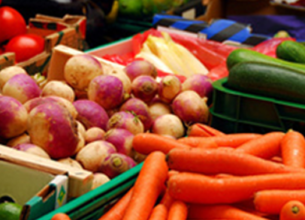INDIAN LIVESTOCK
19, Aug 2019

Prelims level : Economics- Agriculture,
Mains level : GS-III- Issues related to direct and indirect farm subsidies and minimum support prices; Public Distribution System - objectives, functioning, limitations, revamping; issues of buffer stocks and food security; Technology missions; economics of animal-rearing.
Context: India’s Livestock Export Potential Can’t Be Realised Till We Eradicate Foot-and-Mouth Disease
Stats-
- In India, livestock contributes over 4% to the country’s total GDP. As per estimates of the Central Statistics Office (CSO), the value of output from livestock and fisheries is estimated to be close to Rs 5 lakh crore.
Livestock in India
- India has the privilege of having the largest population of livestock in the world.
- India’s milk production is highest in the world.
- And yet, the sector has been neglected for years.
Issue with foot-and-mouth disease (FMD) and brucellosis.
- It is actually the presence of FMD in India that has stopped us from realising the true potential of this sector.
- Trade barriers are put using this as an excuse, while totally putting aside the fact the OIE (The World Organisation for Animal Health) has endorsed our FMD vaccination programme.
- While Andhra Pradesh and Telangana have reported no outbreak of FMD in the last few years, states like UP, Maharashtra and Punjab need extra focus as major trade emanates from there.
What is Foot and mouth disease (FMD)
- Foot and mouth disease (FMD) is a severe, highly contagious viral disease of livestock that has a significant economic impact. The disease affects cattle, swine, sheep, goats and other cloven-hoofed ruminants.
- Intensively reared animals are more susceptible to the disease than traditional breeds. The disease is rarely fatal in adult animals, but there is often high mortality in young animals due to myocarditis or, when the dam is infected by the disease, lack of milk.
Importance of Livestock to Indian Farmer
- In India, 75% of the poor control the country’s livestock, which in turn becomes a major source of their income.
- The direct losses to a farmer due to these diseases comes from a loss in milk production and reduction in the working ability of the animals.
- Export issue
- The bigger economic losses, however, are the non-acceptance of our milk and milk products, meat and its products in certain parts of the world, making the value realisation of our agri exports not at par with countries like Brazil, Australia, New Zealand and so on. Hence, it’s important that we as a nation give top priority for the control, prevention and eradication of this disease.
- Income:
- Livestock is a source of subsidiary income for many families in India especially the resource poor who maintain few heads of animals.
- Cows and buffaloes if in milk will provide regular income to the livestock farmers through sale of milk.
- Animals like sheep and goat serve as sources of income during emergencies to meet exigencies like marriages, treatment of sick persons, children education, repair of houses etc.
- The animals also serve as moving banks and assets which provide economic security to the owners.
- Employment:
- A large number of people in India being less literate and unskilled depend upon agriculture for their livelihoods.
- But agriculture being seasonal in nature could provide employment for a maximum of 180 days in a year.
- The land less and less land people depend upon livestock for utilizing their labour during lean agricultural season.
- Food:
- The livestock products such as milk, meat and eggs are an important source of animal protein to the members of the livestock owners.
- The per capital availability of milk is around 355 g / day; eggs is 69 / annum;
- Social security:
- The animals offer social security to the owners in terms of their status in the society.
- The families especially the landless which own animals are better placed than those who do not. Gifting of animals during marriages is a very common phenomenon in different parts of the country.
- Rearing of animals is a part of the Indian culture. Animals are used for various socio religious functions.
- Cows for house warming ceremonies; rams, bucks and chicken for sacrifice during festive seasons; Bulls and Cows are worshipped during various religious functions. Many owners develop attachment to their animals.
- Draft :
- The bullocks are the back bone of Indian agriculture. The farmers especially the marginal and small depend upon bullocks for ploughing, carting and transport of both inputs and outputs.
- Dung:
- In rural areas dung is used for several purposes which include fuel (dung cakes), fertilizer (farm yard manure), and plastering material (poor man’s cement).
Government intervention
- First cabinet meeting of sanctioning Rs 13,500 crore towards the eradication of this disease in the next five years is commendable and praise worthy.
- or years, this problem has kept our dairy and meat products on the back foot in the global markets.
Past eradication of disease
- In the past, India has successfully eradicated
- We must learn from this and have an exclusive set-up on the same lines to ensure, monitor and set timelines.
- We have experts in the country who have vast experience of FMD control, whom the government should engage for initiating an effective beginning.
What need to be done
- Establishing of adequate check posts to monitor animal movement, and identification of animals will be important and will have tremendous benefits.
- Farm holdings also need to be registered and monitored.
- Keeping in mind the size and scale of our country, the low hanging fruit would be to establish disease-free zones in some prospective economic zones like Andhra-Telangana, Maharashtra-Punjab, Gujarat-MP-Delhi, Haryana and UP.
- The advantages of setting up of these zones will be near elimination of losses on account of FMD morbidity and mortality of livestock, increase in superior quality milk production, skill development of farmers through awareness and competence building programmes, increased contribution to national economy from dairy, meat sectors, more market access options, better and higher utilisation of existing infrastructure.
- The unique strength of India’s livestock market economy need to be achieved positively and effectively by reaching FMD-free status.
- We already do not import any FMD-susceptible animals from countries that could pose possible risk. The only risk from outside the country is the illegal movement of pigs from Myanmar to Northeastern region, but with effective check posts, this can be controlled easily .
Vaccination issue
- It is extremely critical to keep a check on the quality of vaccine as the requirement will be in hundreds of millions per annum.
- It has to meet Indian Pharmacopeia and OIE standards, and it will be important to have an expert committee to monitor, visit and track the manufacturing facilities of the same.
Conclusion
- Eradication of FMD will be a giant step towards doubling of farmers income, better value realisation of dairy and meat and effective utilisation of the privilege of having the largest livestock population in the world.
- It will all depend on how well we use these funds, and how much of established timelines we follow or else this will be another scheme which came and went.










